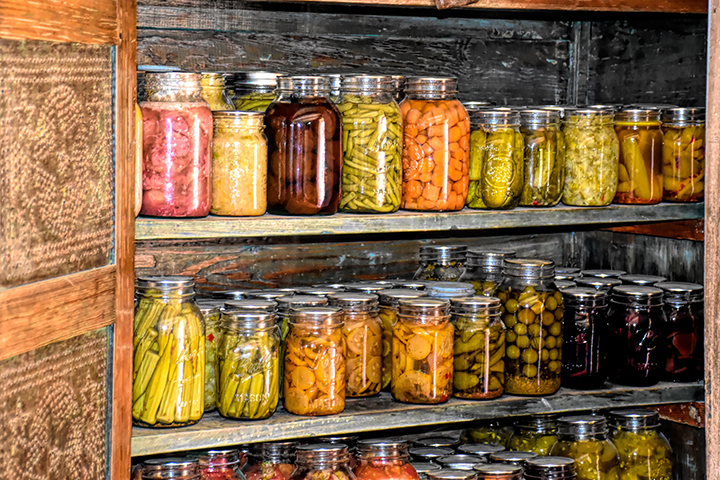Perhaps for the first time in decades, learning how to preserve food at home might come in handy.
Many of us noticed that buying groceries is becoming increasingly more expensive. Inflation, in combination with supply chain failures and looming food shortages, makes us think of taking care of ourselves and our families using alternative and creative means. Home food preservation helps us to stock up and save money.
In this article we will provide you with an outline of ways to preserve food, and in future editions we will explore them in more detail. (Your recipes and ideas are welcome.)
1. Root Cellars, Cool Storage, and Room Temperature Storage
Best for storing potato, carrot, beet, onion, garlic, and also cabbage and apple. It’s easy to store pumpkin and squash this way too.
2. Drying/Dehydrating
Foods that dehydrate well include fruits, vegetables, and jerky.
3. Canning – Water Bath Canning, Steam Canning, and Pressure Canning
Water bath canning preserves high acid foods (pH of 4.6 or lower), such as fruits, jams, jellies and other spreads. It also works for tomatoes (with added acid), pickles and relishes. Pressure canning must be used for low acid foods like beans, carrots, corn, meats, soups, sauces or broth.
4. Freezing
Freezing is easy. You can freeze almost anything. As long as you have electricity to run your freezer, it will work great.
5. Fermentation
Fermentation is very versatile. Because fermentation involves acidity and microbes “pre-digesting” the food, the flavor profile and texture changes. Fermentation helps create chocolate, cheese, yogurt, and kombucha, as well as pantry staples like sauerkraut, kimchi, sourdough bread and vinegar.
6. Preserving in Salt and Sugar
Salt and sugar draw liquid out of the food. This interferes with microbe growth, as bacteria and molds need water to grow.
7. Immersion in Alcohol
Like salt and sugar, alcohol draws water out of food, inhibiting microbe growth. You can submerge small amounts of food completely in the hard liquor of your choice, and they will store almost indefinitely.
8. Vinegar Pickling
Microbes can’t survive in a high acid environment, so vinegar can be used for food preservation without heating/canning.
Two more popular ways of preserving, immersion in olive oil and freeze drying, will be discussed in the future editions of My Indigo Sun.
How to choose what food to preserve when?
When we speak about vegetables, fruit and other produce, the best way to determine what to preserve is to follow the season. Seasonal produce has the most nutrients and so gives the most health benefits.
This site is a great resource for learning what is “in season” in your region – https://www.seasonalfoodguide.org/ The limitation of this site is that it covers only the USA.
Russia and Ukraine together supply more than a quarter of the world’s wheat, and the current conflict puts at risk the supply of flour and flour-based foods, like pasta, in many regions of the world. No need to panic and rush to the stores to stock up on flour bags or boxes of lasagna sheets, but some reasonable measures should be considered and taken.
Tips for storing flour:
Flour is tricky to store long term. It’s best to store it in a cool, dark place, preferably in the original packaging. You can store flour in a fridge or freezer too. To prevent flour from being infested with bugs or moth, use bay leaves. Place bay leaves on the bags, around the bags, and on the shelves of your entire pantry. Once you open the flour bag, place the magic bay leaves in the bags too.
Please share with us your best techniques and recipes. Help us to make our community feel well and safe.
My Indigo Sun team




